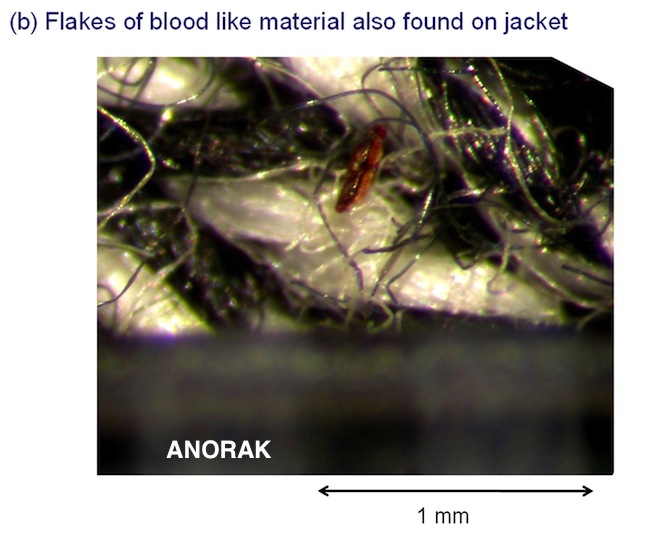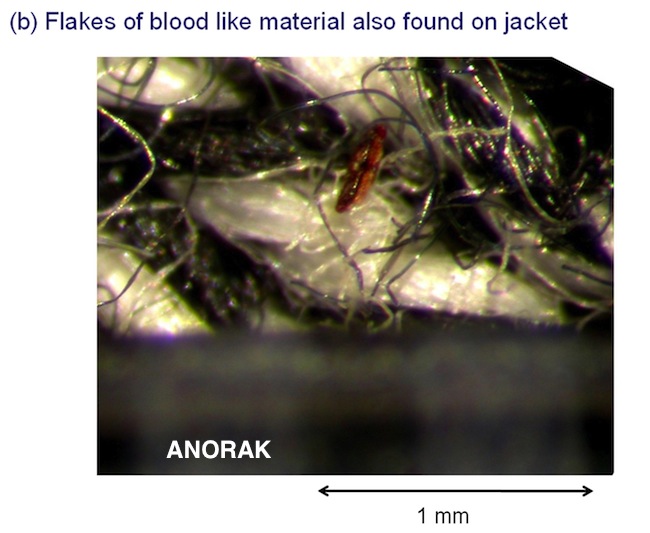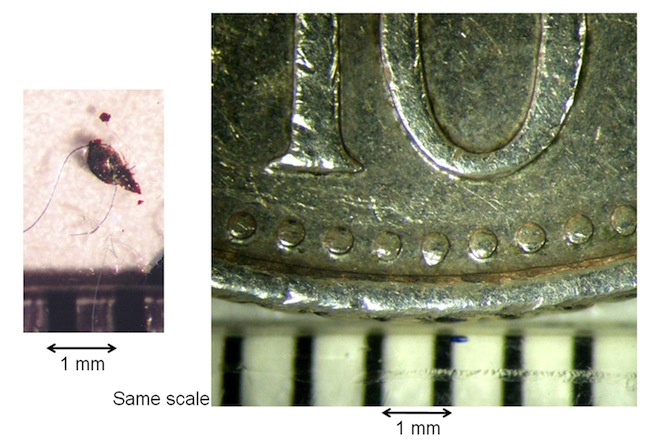Stephen Lawrence Murder Trial: Days 10, 11 & 12: ‘Spiteful’ Police And A Chance In A Billion
 STEPHEN Lawrence Murder Trial: Days 10, 11 & 12: Anorak’s at–a-glance look at the trail of Gary Dobson and David Norris in the news. The accused maintain they are innocent.
STEPHEN Lawrence Murder Trial: Days 10, 11 & 12: Anorak’s at–a-glance look at the trail of Gary Dobson and David Norris in the news. The accused maintain they are innocent.
News Shopper: “Stephen Lawrence’s jacket put in same bag as suspect’s, court hears”
PACKAGES containing the clothing of a suspect in the Stephen Lawrence murder case were put in the same bag as the victim’s jacket, the Old Bailey heard today.
Why?
Christopher Bower, who worked at the Met’s forensic science laboratory in the 1990s, told the court that, after they were tested, he checked evidence bags were securely sealed and then sent them back to police in large plastic “overbags”. He said that on November 13, 1995, packets containing Dobson’s jacket and cardigan had been placed in the same overbag as Mr Lawrence’s black LA Raiders jacket.
So. The contents of the bags wer not in direct contact, then?
An exchange follows:
Dobson’s barrister Tim Roberts: “When you made a choice as to which packages should go into the same overbag together, what criteria informed that choice?”
Mr Bower: “There was no criteria. Random items from the same case would go into an overbag.”
Was it the case that “everything that can be done has been done”?
Bower: “Yes.”
Roberts: “There’s no continuing reason to keep these packages separate.”
Bower: “That’s right, yes.”
Detective Inspector John Carnt said that he could not remember taking out any clothing items from their packaging during a subsequent private prosecution in 1996 and an inquest the following year. His civilian assistant at the time David O’Brien had recorded during the private prosecution that he had opened the evidence bag containing Dobson’s cardigan. But Mr O’Brien told jurors he could not remember if he had actually taken the garment out.
News Shopper: “Minimal chance of contamination’ for Lawrence evidence”
AN audit of crucial evidence in the Stephen Lawrence murder found minimal chance of contamination before 2001, the Old Bailey heard today… In March 2001, Detective Constables Raymond Wood and Paul Sloper carried out an audit of the seized clothing in the case at Deptford police station. It included checking whether the tape on each evidence bag was intact before they placed every packaged item in a new plastic bag. During the audit, they noticed the tape sealing a number of the packets, including those containing Mr Lawrence’s black LA Raiders jacket and Dobson’s cardigan, had started to come away in places.
Mr Sloper, wrote:
“With the passage of time, there’s been an obvious deterioration in the adhesive properties of the Sellotape… It appears that on the whole there was very little co-mingling of exhibits from the various scenes, therefore there could be minimum opportunity for contamination.”
Daily Star: “STEPHEN LAWRENCE OFFICER ‘FIDDLED RECORDS’”
Dc Paul Steed was relieved of his duties in 2008 after being convicted of assault in Spain. He had been the exhibits officer in the probe and had been working on a timeline about items in the case going back to Stephen’s death in 1993 But the Old Bailey heard that before handing over the work to DS Alan Taylor in June 2008, he deliberately spoilt entries in the database. Although he corrected what he had done, his actions forced DS Taylor to start the job again. DS Taylor said his colleague’s actions were “inexplicable”.
Det Con Paul Steed changed reference numbers when he found he was being thrown off the case, the Old Bailey jury heard. Exhibits officer Steed told his 2008 successor, Det Sgt Alan Taylor, that he had altered “a couple of seal numbers” in the computer records before changing them back…
Timothy Roberts QC, for Dobson, said Steed had “sabotaged it so that it would be impossible for anyone coming in after him to follow through continuity of certain exhibits”.
He said: “He behaved in a completely spiteful and damaging way to this inquiry.”
Det Sgt Taylor replied: “That could be said, yes sir.”
Sky News: “Lawrence Trial: Expert Links Suspect To Scene”
A speck of Stephen Lawrence’s blood on defendant Gary Dobson’s jacket was wet when it got there and it probably got there during the murder, the Old Bailey has heard.
The tiny stain may have been splashed when a killer’s knife was pulled out, or the knife touched the jacket, forensic scientist Edward Jarman said.He said the blood had “soaked like a sponge” into the jacket’s fabric. Mr Jarman was one of a team of scientists who carried out a cold case review of the forensic evidence in 2008, 15 years after the murder of the 18-year-old in Eltham, south London.
Mr Jarman told the jury how the tiny stain, measuring 0.5mm by 0.25mm, was revealed during a long microscopic examination of a grey bomber jacket belonging to Dobson.
Jurors were shown a close up of the stain next to a blown-up photograph of a 10p piece. Mr Jarman said the stain was the same size as one of a ring of tiny dots around the edge of the coin.
He said the blood showed a one-in-a-billion match to Stephen Lawrence’s DNA.
Dobson’s lawyer has said he is innocent and the jacket had hung in his wardrobe for many years and he had not worn it for a long time.
The defence suggest that the blood got there through contamination, possibly when other blood flakes got wet during forensic testing.
Mr Jarman said the most likely explanation was that the blood got there at the time of the attack and would have dried within a couple of minutes.
He also said he found more blood matching Mr Lawrence’s in three fragments found in an evidence bag in which the jacket had been kept since the 1993 murder.
And he also discovered three fibres encased in another blood fragment, which must have been wet on the initial contact.
Mark Ellison QC, prosecuting, asked the scientist how Lawrence’s blood came to be on the collar of Dobson’s jacket.
Jarman said: “There was potential that blood could be transferred. It could be transferred by the weapon itself when removed from the victim or the actual blood from the injury itself.”
The blood would have dried quickly, in as little as a couple of minutes, indicating the jacket wearer was “directly involved” in the attack, the jury heard.
Jarman said: “The transfer would have had to have occurred very shortly after the incident given the sort of quantities of blood that are likely to have been available during the assault.”
Jarman said it was “implausible” that the jacket had not been at the murder scene and remained in a wardrobe, in a bedroom where police found Dobson when they raided his parents’ house in May 1993, a fortnight after the murder: “If the jacket remained in the wardrobe I can not envisage a plausible explanation for the presence of that stain on the collar.”
Jarman said capillary action had led to the microscopic blood spot being absorbed into the weave of the collar. He told the jury that meant the blood got there when “wet” and “airborne”. Tests he carried out showed it was highly unlikely the blood stain got into the collar because of other tests carried out on it.
Jarman also said that three blood fragments were found in the evidence bag containing Dobson’s jacket. DNA tests found there was a one in a billion chance this blood did not come from Lawrence. Encased in the blood fragments were three fibres, with one bent in a ‘U’ shape.
Evidence Photos:
Metropolitan Police undated handout photo showing a slide from a Powerpoint presentation shown in court to illustrate the evidence given by Edward Jarman. The slide shows blood flakes found on the jacket seized from Gary Dobson’s home, shown to the jury in the trial of Gary Dobson and David Norris who are accused of the murder of Stephen Lawrence.
Posted: 30th, November 2011 | In: Reviews Comment | TrackBack | Permalink






